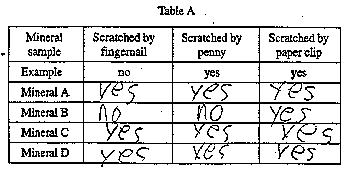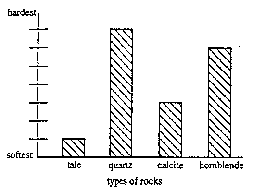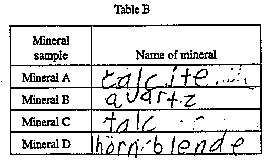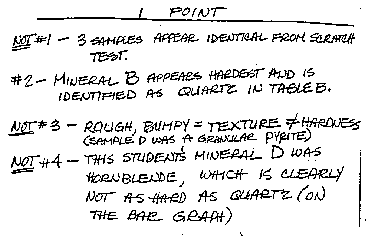 |
 |
|
|
|
|
There is one example for each score point ranging from 4 down to 0. Question 1 and Question 2: Event Score = 1You and your classmates have just found four mineral samples. Try to identify them using a scratch test. Students will work in groups of four, but each student will record the results in his or her own booklet. Scratch Test
 When you are done, go back to your desk. You will be asked to answer some questions. Please answer the following questions by yourself. 1. The samples you were given are pieces of quartz, calcite, talc, and hornblende. Compare your results from Table A to the information on the graph below. 
Try to identify your samples. Write the names in Table B.    Previous Student Work | Next Student Work |